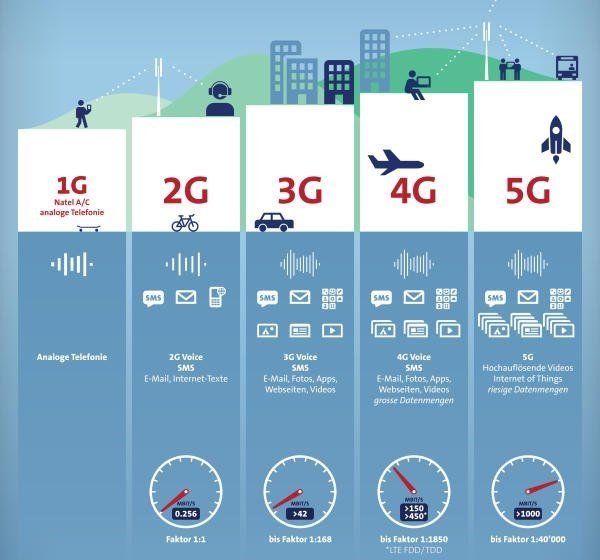5G is the newest wireless network that phones, smart watches, cars, and other mobile devices can take advantage of. A lot of industries see it as their future. Unfortunately, it won’t be available in every country.
Currently, 5G is live in 3 countries including Switzerland. More European countries are planning to level up their connection with Scotland now poising to welcome the most powerful IoT in its major cities, including Inverness, which has long been and 4G and LTE.
Earlier this year, London’s City Fiber vowed £2.5bn investment plan to bring 5G network in almost 20% of the UK market. And this month, Highland Council leader Margaret Davidson already announced 14 towns and cities to soon experience 5G network and IoT.
Councilor Davidson said:
“This is the first step in what will make the Highlands one of the best connected regions in the UK.
This will ultimately draw millions of pounds of investment to local communities and benefit both businesses and the wider population.”
What is 5G Netowork?
5G, fifth generation mobile communications, has great potential to shape how cities work and communicate. The deployment of 4G and LTE (Long Term Evolution) networks has delivered us more rich content in the past years, seeing faster video streaming to live gaming.

It is taking its toll on bandwidth, which now needs to be addressed as demand grows. This time around a new class of applications that are bandwidth intensive like VR (Virtual Reality) and AR (Augmented Reality) will require it. And VR and AR developers indeed confirmed the birth of the 5G network they need to access the full potential of their devices.
Emerging technologies like, serverless applications, autonomous vehicles, live online gaming, time sensitive telemedicine and even blockchain projects have a potential to benefit from this. It may even replace home cable networks as a residential broadband service.
5G is the Future of Scotland’s Tourism
While 5G is being looked at to hit homes and offices first, it will also have a tremendous impact in tourism most especially in the transportation network.
With 5G technology, the tourism sector will become connected on every level. Whether in transportation, culture or hospitality, this new generation of the wireless network will bring many improvements and technological advancements.
We are all well aware that today’s transport system is prone to error and unreliability. There are regular delays on roads, caused by accidents, breakdowns and road works. If there’s a fault on the public transport network, havoc is caused for commuters and travelers.
But by implementing 5G and IoT in transport industry, traveling by land will be frictionless.
It will provide autonomous vehicles with connectivity, offering passengers visibility and an all-round improved travel experience because of stronger Wi-Fi hotspot. In the process, impact on the environment will be lesser.
This new generation of the wireless network will increase punctuality and security at airports, stations, etc. Passenger information will as such become more accurate and will be transmitted in time. 5G technology will have a significant impact on self-driving vehicles, which will be safer and more autonomous.
There’s still some work that needs to be done before we can get to the point where we enjoy a safe and seamless driverless experience with IoT. But the possibilities and advantages for the future seem endless.
Some other benefits include:
Speed: The latency time due to poor network, for example, is considerably reduced. Data transmission will be ten times faster than 4G technology. This will be helpful to transport services like Inverness Taxis that offer pickup and drop off services as they can receive booking notifications in just split seconds and can respond to customers immediately. On the part of commuters, this means lesser hassle.
Reducing wait times: The time to communicate between two devices can be up to one millisecond. And like I mentioned above, communication between drivers and customers will be faster and so as the reporting between drivers and their operators. Overall, this means smoother travel.
Connection density: more devices can connect per square kilometer, about one million, compared to 2000 with 4G technology. With this, reports on traffic or any other road conditions will be almost real-time.
Energy efficiency: The battery life of communication phones increases significantly since it is now the network that handles much of the data.
For other technologies used in tourism, such as virtual and augmented realities, the new network uses higher bandwidth. The reduced latency time improves the content, in addition to synchronization between the participant’s movements and the visual perception. The experience will become much more immersive. The Speed, amount of transferable data and the decrease in reaction time will also have an impact on artificial intelligence.
Information processing and the response of machines or applications using this technology will be more efficient. 5G technology also allows the large-scale deployment of things in the cyberspace/internet, as it provides an opportunity for more devices to be connected at the same time and increase the speed of exchanges.
But 5G rollout is not without controversy though. There are always two sides to a story, and when it comes to 5G there are proponents who want to get the show on the road but there are also opponents who argue about the risk to public health and security.
The Ugly Truths of Using 5G Network?
There has long been a controversy on the safe usage of mobile phones that are connected to the internet. Health experts released evidences of people who seemingly developed some kind illnesses because of the strong radiation emitted by their phones.
The launch of 5G network isn’t a stranger to this kind of speculation.
The World Health Organization released some studies, claiming 5G Network looks beautiful on the outside but it actually causes grave danger to humans.
So while most scientists and engineers agree that the “non-ionizing radiation” put out by cellular devices won’t harm living tissue, WHO and some people have sued companies over brain tumors allegedly caused by cellular phones.
Most recently, grassroots activists have claimed that 5G phones and networks will mutate or microwave people, concepts industry observers dismiss as tinfoil hat-worthy.
However, most of the concern is over densification of those otherwise “likely safe” low- to mid-frequency signals, and the addition of “unknown” high-frequency millimeter wave (24-47GHz) signals to the mix. Skeptics believe that multiplying the number of safe signals to accommodate millions IoT devices and cars could do anything from disrupting human sleeping patterns to killing wildlife. They similarly suggest that introducing millimeter wave signals across the world might sterilize or literally cook people.
In short, the concern is that wireless towers will turn the planet into something like a giant microwave oven, making emissions all but inescapable. As crazy as some of these suggestions might sound, cellular phones do indeed transmit on microwave frequencies, and even leading government agencies in major countries have hesitated to say conclusively that they can’t cause harm.
So Should We Use 5G?
5G is yet to be officially launched but there are already controversies surrounding it. But with the continuous development of better devices that puts remedy to these concerns, the world could actually be a better place with a very advanced communication technology as 5G.

Once approved in Scotland, the Inverness Taxis will fully utilize the network to deliver better services to its customer including:
-No travel delays because of faster processing of bookings
-No travel hassles with up-to-date reports on road happenings
-More entertaining ride with stronger Wi-Fi hotspot
And so much more.
So to live up to our name that we built for 60 years, Inverness Taxis will soon install 5G connection on all our service vehicles.
